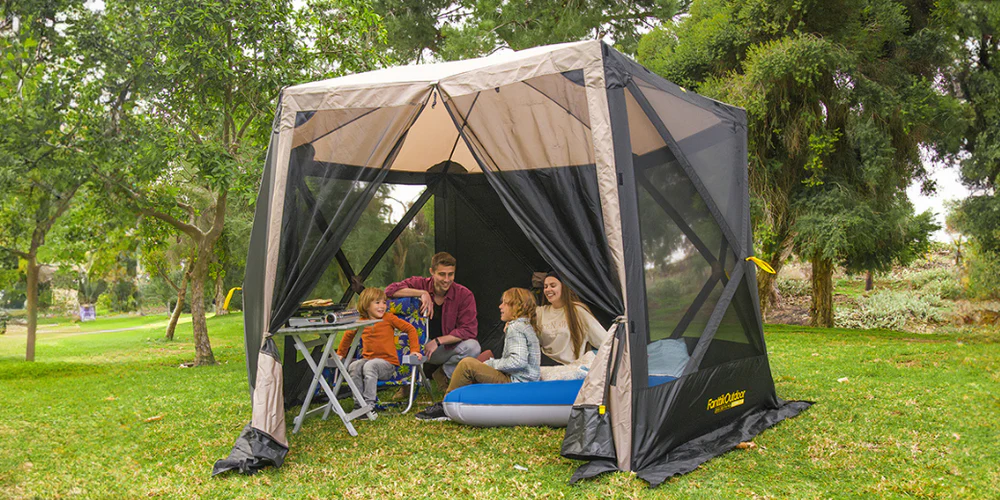Master the Art of Securing Your Anchor Canopy: Tips That Will Change Your Outdoor Experience!
Securing an anchor canopy is crucial for anyone planning outdoor events, whether it’s a family picnic, a wedding, or a community fair. A properly anchored canopy provides shade and protection from unexpected weather, but failing to secure it can lead to disastrous consequences. Picture this: a sudden gust of wind catches your unsecured canopy, sending it tumbling across the yard, risking damage to your equipment and creating a chaotic scene. This is a common issue that many face when canopies are not adequately anchored. The benefits of a securely anchored canopy extend beyond just preventing damage; they include enhanced safety for you and your guests and a more enjoyable outdoor experience overall. With the right techniques, you can ensure your canopy remains stable no matter what the weather throws at you.

Understanding the Basics of Anchor Canopy Setup
An anchor canopy is a portable structure designed to provide shade and shelter during outdoor events. Typically used for parties, markets, and festivals, these canopies consist of a frame, a weather-resistant fabric top, and a variety of anchoring systems to keep them stable. Understanding the components involved in setting up your canopy is essential for ensuring it remains secure. The frame serves as the skeleton, while the fabric top protects against sun and rain. The anchoring systems, which may include weights, stakes, and guy lines, play a critical role in stabilizing the structure and preventing it from being lifted or knocked over by strong winds. Knowing how to set up each of these elements effectively is the first step in mastering the art of canopy security.
Essential Techniques for Securing Your Anchor Canopy
Securing your anchor canopy involves several techniques that work together to ensure stability. One of the most effective methods is using weights. These can be in the form of sandbags or specially designed weight bags that you place at the base of each leg of the canopy. Additionally, stakes can be driven into the ground to provide extra support, especially in grassy areas. Guy lines, which are tensioned ropes that connect the canopy to ground anchors, also add stability by preventing lateral movement. Each method plays a unique role in securing your canopy, and utilizing a combination of these techniques will greatly enhance its resistance to wind and adverse weather conditions. It’s essential to assess the area where you will set up the canopy and choose the appropriate methods for securing it based on the environment.
Using Weights Effectively
When it comes to using weights, the distribution is key. Using sandbags or water containers can significantly increase the stability of your canopy. Aim to place weights at each corner of the canopy, ensuring they are equally distributed to prevent any tipping. If you’re using water containers, consider filling them to the maximum capacity to provide the best support. A personal experience I had was during a friend’s outdoor wedding; we used sandbags and even filled some containers with water to secure the canopy. The wind picked up unexpectedly, but thanks to our careful planning, the canopy held firm, allowing the celebration to continue without a hitch. Remember, the more weight you can add without compromising safety, the better protected your canopy will be.
Proper Use of Stakes and Guy Lines
Stakes and guy lines are indispensable when it comes to anchoring your canopy, especially in loose soil or grassy areas. Proper installation involves driving the stakes at an angle away from the canopy, typically about 45 degrees, to create a firm hold. The distance from the canopy should be approximately one-third of the height of the canopy for optimal stability. A common mistake is to place stakes too close to the structure, which can lead to failure during windy conditions. My neighbor once learned this the hard way; he set up a canopy for a barbecue without securing it correctly, and it ended up collapsing under a sudden gust. Avoid these pitfalls by ensuring your stakes are firmly in the ground and your guy lines are taut.
Weather Considerations and Safety Precautions
Weather conditions can dramatically affect the stability of your canopy. Before setting up, it’s important to check the weather forecast for wind speeds and potential storms. High winds can easily uproot an unsecured canopy, so if you’re expecting gusts above a certain threshold, it’s best to take it down. Additionally, keep an eye out for changing weather during your event. As a rule of thumb, if you notice strong winds or dark clouds rolling in, be prepared to dismantle your setup to avoid accidents. It’s always better to err on the side of caution when it comes to safety.
Regular Maintenance and Inspection
Regular maintenance of your canopy is vital for ensuring its longevity and functionality. Before each use, inspect the canopy and anchoring systems for any signs of wear and tear. Check the fabric for rips or tears, and ensure that all connections are secure. A checklist for inspection could include looking at the frame for stability, ensuring weights are in good condition, and confirming that stakes and guy lines are ready for use. Neglecting these checks could lead to problems during your event, as I learned after a friend’s canopy collapsed due to a frayed guy line that went unnoticed during setup. Regular maintenance helps prevent such mishaps and keeps your events running smoothly.
Securing Your Canopy for a Safe Outdoor Experience
In summary, securing your anchor canopy involves understanding its components, employing effective techniques like using weights, stakes, and guy lines, and being mindful of weather conditions. Regular maintenance and thorough inspections can enhance your safety and enjoyment during outdoor events. By implementing the tips provided in this article, you can ensure that your canopy remains secure, allowing you to focus on what truly matters: creating memorable experiences with friends and family. Don’t take chances—master the art of securing your anchor canopy today for a worry-free outdoor experience!






